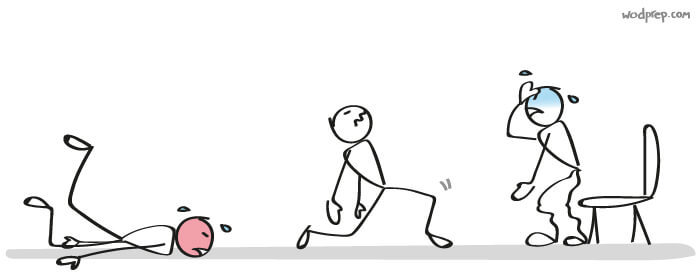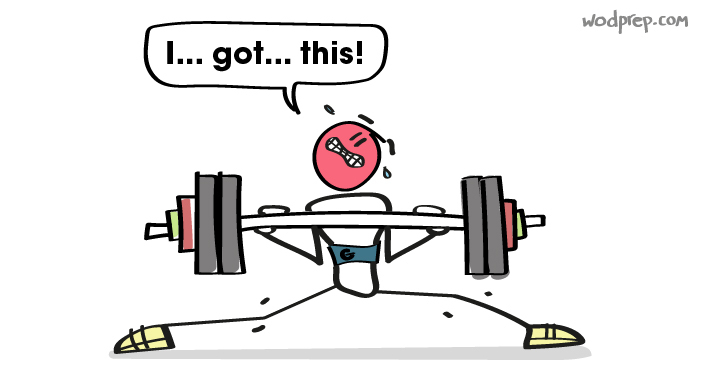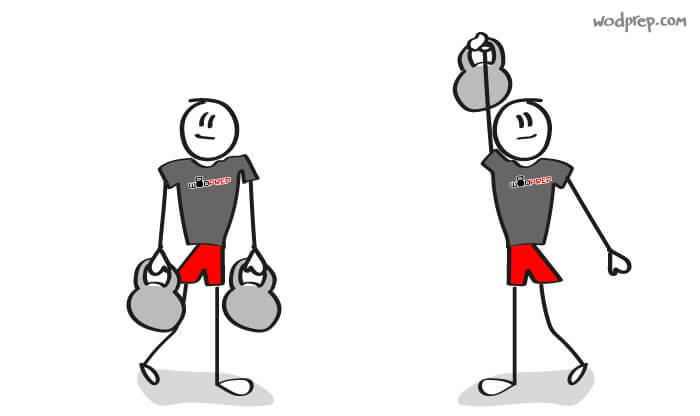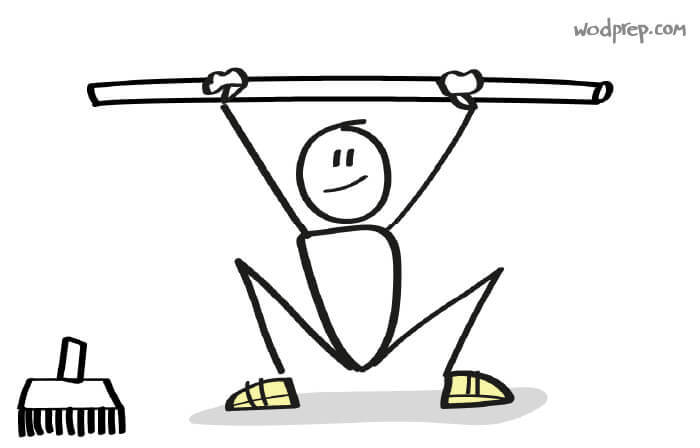With the majority of CrossFit Masters athletes only finding the sport of fitness later in life, it’s easy to get caught up in the hype and go from a relatively sedentary lifestyle to training full time for the OAGQ. I caught up with Physiotherapist and Head Coach of WODprep Masters (Dr. CJ DePalma) to provide some valuable tips for CrossFit Masters athletes. Whether you train at a box, online, or program for yourself in your garage gym, there are some fundamentals that are worth following for long term success as a CrossFit Master!
First up, what are the CrossFit Masters age groups; when does an athlete officially become a Master?
Officially - at age 35 you're a CrossFit Masters Athlete. The age groups are as follows;
- 35-39
- 40-44
- 45-49
- 50-54
- 55-60
- 60+
However, the in the CrossFit Open, nothing changes as far as workouts/weights go until the age groups of 55+.
When writing programming for CrossFit Masters workouts, how does it differ from the rest of the population?
Personally I think it comes down to Longevity vs Performance. Not that performance isn’t important, but longevity will allow you to perform at your highest level for the longest period of time without pain and injury. With this notion, it is not about hitting a ton of volume, it’s about being effective with your dosing and hitting every training session with purpose.

As you get older, piling up unnecessary volume can do more harm than good as our ability to recover decreases. So we want to create the most effective training with the least amount of volume, which we refer to as the ‘minimum effective dose’ strategy. Meaning when you hit a WOD, it should be specific to training for a goal, not just for the sake of working out. The more volume you do, the longer the recovery. Taking that into consideration we can still create the same training effect with less volume, if the programming ALWAYS has purpose.
So when programming for Masters, I make sure that sessions are structured and specific, allowing athletes to hit pieces with intensity early in training when they’re fresh. Adding nothing that doesn’t have a very specific purpose in our overarching goal.
Would you program differently depending on the specific CrossFit Masters Division?
Yes; depending on the athlete, I would program for Masters aged 35-45 similarly to how I would for non Masters athletes but it would change from 45 onwards.
How would someone programming for themselves measure Minimum Effective Dose?
This is tough. I would say that if you’re used to 2-3 hour sessions, try reducing that to 1-1.5 hour sessions and see if you can create the same results. Other strength sports like powerlifting demonstrate the ability to get stronger with less volume just by being more specific. Look at how you’re recovering; do you feel beat down the following day? If so you can try alternating volume and intensity over the week.

If you look at our WODprep Masters program, we go from a high to medium to low intensity/volume pattern. Monday’s are usually high intensity with high volume, Tuesday is less intensity (as far as heavy load) and Wednesdays are usually slow, steady state workouts with less overall contraction volume and lower intensity (Contraction volume= actual muscle contractions). Perhaps swap out a tough day with a day with carries and light bike then see how you feel. You shouldn’t always feel trashed at the end of every workout - this is super important.
You have to stress a certain amount to actually create change, but that stress window has a ceiling and working at the ceiling everyday usually does not allow you to recover. We get bigger, faster and stronger during sleep and recovery, NOT while actually training, so if we are never recovering because we are always training then we are never actually improving.

The problem with a lot of programs is that they don’t take into consideration the limitations of the average athlete’s ability to recover ie. Work, kids, life, etc. When training is NOT your number 1 priority and you can not manipulate your whole life around your training then you need to consider lowering your overall volume. You can do this by making sure you include high, moderate and low intensity days throughout your week. Here’s a few examples of how you could structure your week;
high/low/high/rest/mod/high/rest
high/mod/low/rest/mod/high/rest
high/mod/low/rest/high/mod/rest
What are the signs a Masters Athlete is not recovering adequately?
Here are a few things that would indicate a lack of recovery to me;
- Sleeping restlessly / not enough
- Always training sore, no one should be sore every day.
- Struggling to hit percentages programmed
- Feel like training seems too daunting every day
To encourage better recovery, what would you suggest?
Take out 30% of that program and hit 60-70% of it with all the intensity and focus that you have and you’ll create the same, or more, change with less volume than if you hit 100% of it with less intensity and focus. A good analogy is like trying to improve your ability to sprint at max effort when you are already tired. Charlie Francis (old olympic track coach) taught us that trying to create 100% power and output when you are tired will teach you to create a lower perceived 100% effort. Basically, training tired will make you slower. So do less, rest often and make sure that what you are doing ALWAYS has purpose and intent.
What about rest days, what do you recommend for your Senior CrossFit athletes?
I’m a big promoter of true rest - it’s ok to do nothing on a rest day. If you really struggle mentally with taking rest days there are things you can do;
- Slow, easy assault bike
- Isometrics (Holds, Carries, Bracing positions)
- Slow, light positional work

Some activities I would definitely not include as active recovery;
- Running - to many contractions and volume on joints
- Rowing - a ton of hip hinging
- Fast, dynamic movements
Limited mobility is often a huge stumbling block for Masters Athletes. How do you recommend going about improving this?
Defining your reason why is important. If you just want to be all-round more flexible then static mobility work is perfect. But that’s not usually the athlete’s goal. Usually it’s to snatch better, deadlift, perform kipping movements etc.
Here’s my prescription; want to snatch better? Sit in an overhead squat with an empty barbell every day. Get into the position you want to improve and load it - doesn’t have to be heavy. Find active, light-loaded positions and work them on a regular basis. Instead of trying to attack it with long periods of passive stretching, be specific and attack the movement position directly.

When is it a good time to deload and what’s the best way of programming it for CrossFit?
This will vary person to person, as well as how you train throughout the year. If your volume is appropriate, you won’t need deloads too often. If you feel super run down, try to deload for a few days to a week. As for how to program it, take what’s written and reduce it by 20-30%. One option is completing the workouts as EMOMs to build in rest, or perform them at 70% intensity.
When working on CrossFit skills, how do you choose which to work on first?
My best advice for skill work is to find the lowest hanging fruit; this could be what you’re worst at, or what you’re close to being able to do. Some best practices;
- If it’s CrossFit gymnastics skill, prioritise strict strength outside of class. (Strict Pull-ups, Horizontal press/pull)
- Focus on 1-2 things at a time.
- Don’t work on skills you don’t yet have when tired, always practice them fresh.
- Have a structured plan. If you have the movement but need capacity then just doing the movement is fine but if you don’t have the skill yet, you need a program.
Need some inspiration from a Masters athlete who crushed her skill work with WODprep's skill courses? Check out badass 60+ athlete Patricia McGill.

Need a plan? WODprep’s 8 week skill courses come with coaching and feedback every step of the way. Check them out here.
You write the programming for WODprep Masters, why would you recommend it over writing your own or following a generic CrossFit program?
Our number one goal for our Masters - get you better for the CrossFit Open while keeping you injury free! We want our athletes to improve their ability to do CrossFit - not just general fitness. A lot of boxes these days - to their benefit - don’t do things like full Snatch or Overhead Squats anymore because it’s not important for their general fitness crowd.
We utilize the minimum effective dose strategy in WODprep Masters program and prioritize skill work, NOT JUST CAPACITY TRAINING or WODs, which our athletes can get feedback and coaching on from within the group. And best of all - everyone is a Masters Athlete - it’s a kind of community you just won’t find anywhere else.
You train athletes 1-on-1 too, how does that differ from your group Masters program?
Working with a coach 1-on-1 will be the most effective way of reaching your goals. The program is tailored to you, your goals, your situation and your lifestyle. Your every strength, weakness, injury and preference is taken into consideration. You’ll have days in class where you feel like the workout did nothing for you or more likely you have to scale everything and miss the stimulus. This will never happen with 1-on-1; because it’s written specifically for you.
What about athletes with CrossFit Games ambitions; what would be the route for them?
If the athlete is fit enough AND skilful enough to qualify for the CrossFit Games, their programming is much more highly skilled and of higher volume compared to traditional training. If qualifying for the Games is achievable for you, then 1-on-1 coaching is a must; a group program just isn't going to cut it at that level.
If you’re over 35 years of age and like the sound of Dr CJ DePalma’s programming, come join us in WODprep Masters. The program is delivered via SugarWOD, with daily Chalk Talks so you always know exactly what you’re doing. Sign-up for 7 FREE days below.
Want to try 7 Days of FREE WODprep Masters Programming delivered to your inbox?
